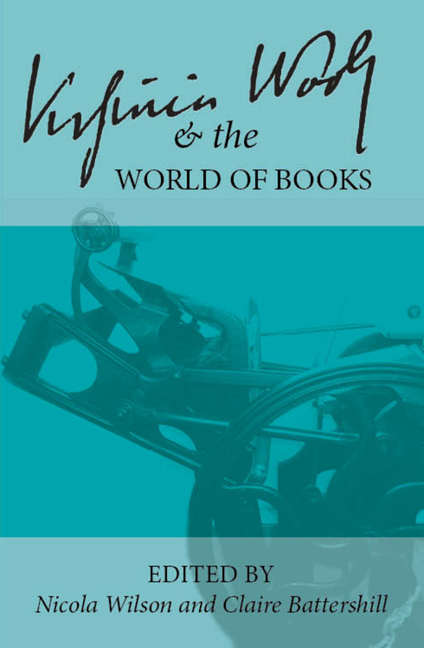 Virginia Woolf and the World of Books
Virginia Woolf and the World of Books Book contents
- Frontmatter
- Contents
- Introduction
- List of Abbreviations
- Keynote
- In the Archives
- Craftsmanship
- The Hogarth Press
- Hours in A Library
- The Art of the Book
- Ekphrastic Writing, Illusive Illustration: Vanessa Bell's Embroideries for Virginia Woolf's “Kew Gardens”
- “The active and the contemplative”: Charles Mauron, Virginia Woolf, and Roger Fry
- Vanessa Bell's “tiny book”: Woolf, Impressionism, Roger Fry, and Anti-Semitism
- The Art of the Narrative
- Making New Books: Creative Approaches
- The Book in the World: Woolf's Global Reception
- Editing and Teaching Woolf
- Intertextuality
- Lives in Writing
- Notes on Contributors
Ekphrastic Writing, Illusive Illustration: Vanessa Bell's Embroideries for Virginia Woolf's “Kew Gardens”
from The Art of the Book
- Frontmatter
- Contents
- Introduction
- List of Abbreviations
- Keynote
- In the Archives
- Craftsmanship
- The Hogarth Press
- Hours in A Library
- The Art of the Book
- Ekphrastic Writing, Illusive Illustration: Vanessa Bell's Embroideries for Virginia Woolf's “Kew Gardens”
- “The active and the contemplative”: Charles Mauron, Virginia Woolf, and Roger Fry
- Vanessa Bell's “tiny book”: Woolf, Impressionism, Roger Fry, and Anti-Semitism
- The Art of the Narrative
- Making New Books: Creative Approaches
- The Book in the World: Woolf's Global Reception
- Editing and Teaching Woolf
- Intertextuality
- Lives in Writing
- Notes on Contributors
Summary
Artist and critic Roger Fry, a close friend and colleague of both Vanessa Bell and Virginia Woolf, described the relationship between “the Author and the Artist” as “a battle ground, a no man's land raked by alternate fires from the artist and the writer” (Fry 9). Yet at the Hogarth Press, Virginia and Leonard Woolf repeatedly incorporated images into narrative structures. This paper acknowledges that at times these efforts re-staged Fry's vision of embattled antagonism between word and image; but also investigates how, through experimental design, they sought to create further discursive spaces within the text.
Using Bell's images for the different editions of Woolf 's short story Kew Gardens, this paper will probe the extent to which the reader can see, read and interpret these decorated pages of writing as a project which self-consciously tests the limits of the tripartite relationship between story-telling, illustration and publishing. What are the effects of these collaborations between artist and writer, image and word on the reader's experience of this experimental story? To what extent does Bell's embellishment of the third edition of Woolf 's short story Kew Gardens, published in 1927, significantly modify the reader's relationship with the story, in comparison with the previous two unadorned editions of the same text? Are they merely ornamental, or do they become an important feature of the text?
Bell was one of the first readers of Kew Gardens. She read the story in manuscript in July 1918 (it was first published in May 1919) while suffering from morning sickness four months into her third (full-term) pregnancy, living frugally on war rations, troubled by servants and vexed by her brother Adrian's relationship crisis. “It's a relief to turn to your story,” she informed her sister, “although some of the conversation—she says, I says, sugar—I know too well!” (Bell 214). She thought it “fascinating and a great success” and immediately put forward the idea that she should illustrate it: “I wonder if I could do a drawing for it.” Woolf had praised Bell's A Conversation/Three Women of 1913 admitting to feeling a hint of envy at Bell's ability to synthesize form and psychological acuity. “I think you are a most remarkable painter,” she wrote—high praise in itself.
- Type
- Chapter
- Information
- Virginia Woolf and the World of BooksSelected Papers from the Twenty-seventh Annual International Conference on Virginia Woolf, pp. 122 - 127Publisher: Liverpool University PressPrint publication year: 2018
